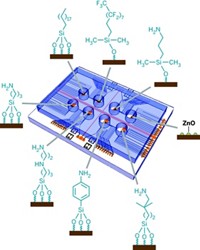Advertisement
Grab your lab coat. Let's get started
Welcome!
Welcome!
Create an account below to get 6 C&EN articles per month, receive newsletters and more - all free.
It seems this is your first time logging in online. Please enter the following information to continue.
As an ACS member you automatically get access to this site. All we need is few more details to create your reading experience.
Not you? Sign in with a different account.
Not you? Sign in with a different account.
ERROR 1
ERROR 1
ERROR 2
ERROR 2
ERROR 2
ERROR 2
ERROR 2
Password and Confirm password must match.
If you have an ACS member number, please enter it here so we can link this account to your membership. (optional)
ERROR 2
ACS values your privacy. By submitting your information, you are gaining access to C&EN and subscribing to our weekly newsletter. We use the information you provide to make your reading experience better, and we will never sell your data to third party members.
Analytical Chemistry
Silicon Nanowire Detects Explosives
Ultrasensitive arrays of silane-functionalized nanowires outsniff dogs in selectively detecting TNT
by Mitch Jacoby
September 13, 2010
| A version of this story appeared in
Volume 88, Issue 37

Arrays of functionalized silicon nanowires can serve as selective, ultrasensitive explosives detectors, according to researchers at Israel’s Tel Aviv University. In addition to using the devices in security applications, the nanowires could serve as sensors for soil and water analyses, Yoni Engel, Fernando Patolsky, and coworkers report. The researchers fashioned field-effect-transistor detectors from silicon nanowires coated with a monolayer of 3-aminopropyltriethoxysilane and used the devices, which can distinguish between compounds with and without nitro groups, to detect 2,4,6-trinitrotoluene (TNT) at subfemtomolar concentrations (Angew. Chem. Int. Ed. 2010, 49, 6830). Some of the test devices reached unprecedented attomolar levels, they note, thereby outperforming trained sniffer dogs and all other types of explosives detectors. The team adds that the portable detectors can be used on solution-phase and air samples without preconcentration and extensive sample preparation, and they gave reproducible results throughout a weeklong run involving some 100 tests. The researchers explain that the molecules bind tightly to the nanowires through an acid-base pairing interaction between TNT and amino groups on the sensor surface.




Join the conversation
Contact the reporter
Submit a Letter to the Editor for publication
Engage with us on Twitter